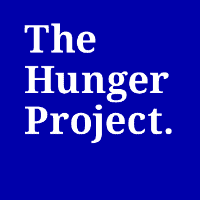 Microfinance programs provide small-scale financial services to low-income individuals. Loans are designed to foster sustainable economic empowerment and capacity building for people in developing regions. Unfortunately, microfinance and microcredit programs have come under criticism recently following out of control lending practices by unmonitored and irresponsible organizations. Lending that led to unmanageable debt for many individual borrowers. In light of this, a recent article from United Nations magazine Africa Renewal asks: “Should development practitioners respond by abandoning efforts to bring financial services to the poor?”
Microfinance programs provide small-scale financial services to low-income individuals. Loans are designed to foster sustainable economic empowerment and capacity building for people in developing regions. Unfortunately, microfinance and microcredit programs have come under criticism recently following out of control lending practices by unmonitored and irresponsible organizations. Lending that led to unmanageable debt for many individual borrowers. In light of this, a recent article from United Nations magazine Africa Renewal asks: “Should development practitioners respond by abandoning efforts to bring financial services to the poor?”
We say: absolutely not.
Microfinance, when executed correctly, is more than simply lending and collecting. THP’s Microfinance Program is a comprehensive training, savings and credit program that addresses a critical missing link for the end of poverty and hunger in Africa: the economic empowerment of Africa’s women. By enabling women (and men) access to loans, savings and credit for small-businesses or other income generating enterprises, the Microfinance Program supports local, sustainable communities that are both economically and food-secure – even during times of crisis.
As stated by Senior Microfinance Program Officer (MFPO), Marie Mintalucci, “Epicenter Loan Committees and Village Loan Committees are largely responsible for the local management of the Microfinance Program. This sets THP apart from many other organizations that implement microfinance programs and importantly builds local capacity and ownership.”
But doubt remains. David Roodman and Jonathan Morduch, in The Impact of Microcredit on the Poor in Bangladesh: Revisiting the Evidence feel that “strikingly, 30 years into the microfinance movement we have little solid evidence that it improves the lives of clients in measurable ways.”
Yet, THP’s Microfinance Program has produced measurable results. Partners who participate in lending programs can demonstrate significant, lasting increases in crop yields and food security; improved communal health and hygiene; increased school attendance and adult literacy; and the increase participation of women in community leadership. So what is different about THP’s microfinance?
These successes are made possible by an additional, integral element of THP programs: the Epicenter Strategy. While we believe in the importance of microfinance, we believe it is even more important to holistically support loan-holders throughout the lending process. Community members have access to savings options and business and financial trainings at their local epicenter in addition to a range of other workshops on food-security, agricultural practices, health and hygiene.
Africa Renewal holds a similar opinion: “On its own [microfinance] cannot fundamentally transform African economies held back by many structural constraints. Yet providing a whole range of financial services to the poor — including credit for small and micro-enterprises, savings facilities, insurance, pensions, and payment and transfer facilities — is clearly desirable and can contribute to the achievement of the Millennium Development Goals.”
Microfinance run amok can do more harm than good but THP’s Microfinance Program has proven a valuable option for our Epicenter partners. Senior MFPO Mintalucci commends the work of local Microfinance Programs: “Their leadership is helping to move their communities out of hunger and poverty.”
Perhaps before abandoning microfinance, organizations should consider restructuring their existing programs into sustainable, holistic and locally-led systems.
